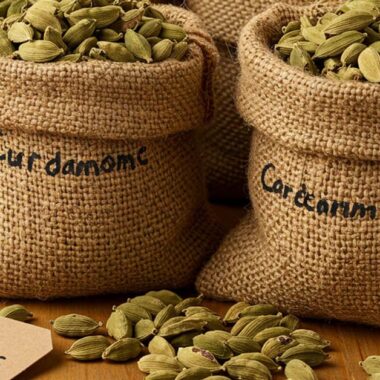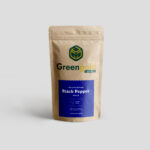Droughts can severely impact cardamom plantations, leading to stunted growth, lower yields, and reduced quality. However, with proper water management and drought-resilient practices, farmers can protect their crops and sustain production.
Here’s a complete guide to managing cardamom farms during droughts! 👇
1. Efficient Water Conservation Techniques 💦
Water is the most crucial resource during droughts. Implementing water-saving methods can minimize losses and keep the plants hydrated.
✅ Mulching to Retain Soil Moisture
🌱 Use organic mulch like dried leaves, coconut husk, or grass around the base of plants.
🌱 Reduces evaporation, controls soil temperature, and prevents weed growth.
✅ Drip Irrigation: A Smart Solution
💧 Provides slow, steady water supply directly to the roots.
💧 Reduces water wastage compared to traditional flood irrigation.
💧 Improves water efficiency by 50-70%!
✅ Rainwater Harvesting 🌧️
💧 Collect rainwater in farm ponds, check dams, or storage tanks.
💧 Use stored water for irrigation during dry periods.
💧 Terrace bunding and contour trenches can help slow down water runoff.
2. Choosing Drought-Tolerant Cardamom Varieties 🌱
Some cardamom varieties are more resistant to drought stress. Selecting hardy plants can improve survival rates during water shortages.
✅ Talk to local agricultural experts about drought-tolerant varieties.
✅ Use disease-resistant plants to avoid stress-related fungal attacks.
3. Proper Shade Management 🌳🌤️
Excessive heat and direct sunlight can increase moisture loss. Shade trees help by:
✔ Reducing evaporation from the soil.
✔ Protecting cardamom plants from direct heat stress.
✔ Creating a cool microclimate around the plantation.
🌿 Recommended shade trees: Silver Oak, Jackfruit, and Areca Palm.
4. Soil Health & Nutrient Management 🌾
During droughts, plants struggle to absorb nutrients due to lack of water. Healthy soil retains more moisture and improves plant survival.
✅ Use organic compost & biofertilizers to improve soil structure.
✅ Apply potassium-rich fertilizers – helps plants handle drought stress better.
✅ Maintain proper soil aeration – loosening soil reduces water runoff.
💡 Avoid chemical fertilizers in drought periods, as they need water to be effective!
5. Reducing Transpiration Losses 🍃
Excess water loss through leaves can weaken plants. Control transpiration by:
✔ Spraying antitranspirants like Kaolin clay or Aloe Vera extract.
✔ Trimming unnecessary shoots to reduce moisture demand.
✔ Applying organic humic acid to strengthen plant cells.
6. Pest & Disease Control During Droughts 🐛❌
Drought-weakened plants are more prone to pest attacks. Protect them by:
🐜 Neem oil sprays – Natural pest repellent.
🦠 Trichoderma biofungicides – Prevents root rot.
🌱 Regular monitoring – Early detection prevents infestations.
7. Smart Harvesting Strategies During Drought 🌾
Drought can delay flowering and reduce fruit setting. Ensure:
✔ Timely harvesting to prevent further plant stress.
✔ Selective picking – Prioritize healthy, matured pods.
✔ Avoid over-harvesting – Let plants recover naturally.
Why Managing Drought is Important for Cardamom Farmers 💰🌍
✅ Prevents crop failure – Ensures consistent yield even in dry conditions.
✅ Saves water – Sustainable techniques reduce water usage.
✅ Maintains quality – Prevents pods from shriveling or losing aroma.
✅ Ensures long-term farm sustainability – Protects soil and biodiversity.
🌿 Looking for high-quality cardamom products?
🛒 Shop at Greengold Guide!












